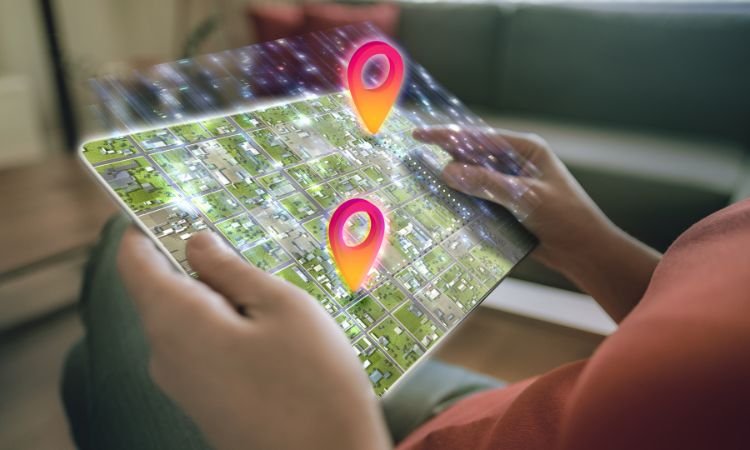In today’s fast-paced world, digital maps have become integral to our daily lives, whether it’s navigating through city streets, exploring remote terrains, or accessing location-based services. The global digital map market size is estimated to grow at a CAGR of 13.90% in the forecast period of 2025-2034, reaching a value of around USD 37.79 billion by 2034. The market is being driven by increasing demand in automotives and widespread usage of mobile devices. This blog post delves deep into the factors contributing to the market’s growth, the various segments within the industry, and regional trends that are shaping the digital map landscape.
Market Overview
The digital map market encompasses a variety of technologies that allow users to visualize, interpret, and interact with geographical data. Over the years, this market has seen significant growth, as it plays a vital role in multiple industries such as automotive, government, healthcare, and consumer electronics. The growing reliance on GPS technology, the development of autonomous vehicles, and the increasing integration of mapping solutions into smartphones are key factors driving the market forward.
Market challenges such as data privacy concerns, the need for regular updates, and the cost of high-accuracy mapping systems may slow growth to an extent, but the overall outlook remains positive. The evolution of advanced mapping technologies and increasing interest in smart city projects will continue to push digital maps into new applications and geographies.
Market Segmentation
By Type
Software Solutions
Digital map software solutions refer to the tools that enable users to create, view, and manipulate maps. These software solutions are at the heart of the digital map industry, powering everything from routing applications on mobile devices to complex geographic information systems (GIS) used in urban planning and resource management. The software market is being fueled by the adoption of advanced analytics and AI-driven mapping technologies that allow for dynamic, real-time map creation.
Maps
Maps are the visual representations of geographical areas. Digital maps have evolved beyond basic road maps to include highly detailed topographic maps, 3D renderings of cities, and even maps with real-time traffic updates. With the continuous advancement in satellite imagery and LIDAR (Light Detection and Ranging) technologies, digital maps have become highly detailed and accurate, with applications ranging from navigation to environmental monitoring.
Services
The digital map market also includes services such as map updates, cloud storage for maps, and customized mapping solutions. As consumers and businesses increasingly demand accurate and up-to-date mapping information, the need for reliable mapping services has expanded. Service providers also offer tailored solutions for specific industries like automotive, transportation, and logistics.
By Functionality
Computerized
The computerized functionality of digital maps refers to the software and systems that process geographic data, helping users visualize, analyze, and interpret spatial information. These systems are integral to urban planning, logistics, disaster management, and other sectors. The rise of Big Data, along with AI and machine learning, has enabled even more sophisticated computer-generated mapping solutions.
Scientific
Scientific maps are designed for use in research, offering specialized mapping solutions that support disciplines such as geology, climate science, and biodiversity studies. These maps are often highly detailed and customized to display specific types of geographical or environmental data, such as ocean currents, temperature patterns, or the distribution of various species.
GPS Navigation
GPS-based digital maps have revolutionized how we navigate our world. With widespread usage in both personal and commercial vehicles, these maps are used for real-time navigation, route optimization, and location-based services. The continuous enhancement of GPS technology is expected to drive the growth of this segment, particularly with the ongoing development of autonomous vehicles.
By Applications
Indoor Applications
Digital maps are also widely used in indoor applications such as shopping malls, airports, hospitals, and office buildings. These maps help users navigate complex indoor spaces, offering real-time location tracking and optimized navigation paths. The demand for such maps is growing with the expansion of smart buildings and IoT integration.
Outdoor Applications
Outdoor applications of digital maps are perhaps the most well-known, including GPS navigation for driving, hiking, and other outdoor activities. The growing adoption of digital maps for logistics, fleet management, and outdoor exploration is propelling the market forward. Moreover, the rise of augmented reality (AR) and virtual reality (VR) is pushing outdoor maps into more interactive, immersive experiences.
By End Use
Government and Utilities
Governments around the world utilize digital mapping for urban planning, disaster management, resource allocation, and infrastructure development. The public sector has been a major adopter of digital maps, using them for everything from national security to environmental conservation. The integration of digital maps in utility services such as electricity and water management also drives significant demand in this sector.
Automotive
The automotive sector is one of the primary drivers of the digital map market. With the rise of autonomous vehicles, advanced navigation systems, and connected cars, the demand for high-precision digital maps is surging. These maps help vehicles navigate roads, avoid obstacles, and optimize travel routes, making them indispensable for modern transportation.
Others
In addition to the automotive and government sectors, digital maps find applications in a wide variety of industries, including healthcare, real estate, retail, and education. For instance, real estate companies use mapping solutions to show property boundaries, while educational institutions use maps for geographic analysis and teaching.
Regional Analysis
North America
North America holds a significant share of the global digital map market, primarily driven by technological advancements and high demand from the automotive and government sectors. The presence of key players like Google, Apple, and HERE Technologies further strengthens the market in this region.
Europe
Europe is expected to see steady growth in the digital map market, with increased government investment in smart city initiatives and the integration of digital maps into autonomous vehicles. Countries like Germany, France, and the UK are major contributors to this market segment.
Asia Pacific
The Asia Pacific region is experiencing rapid urbanization and technological adoption, making it one of the fastest-growing markets for digital maps. China, Japan, and India are key players in this growth, with rising demand in both the automotive and consumer electronics industries.
Latin America and Middle East & Africa
Though the markets in Latin America and the Middle East & Africa are smaller, they are seeing increased adoption of digital maps due to growing infrastructure projects and the expansion of mobile device usage.
Competitive Landscape
The competitive landscape of the digital map market is highly fragmented, with several key players leading the charge. Companies like Google, Apple, HERE Technologies, TomTom, and Mapbox dominate the market, focusing on expanding their mapping solutions and acquiring new technologies. Key strategies include partnerships, acquisitions, and continuous product innovation. For example, the collaboration between automakers and tech companies has led to the development of next-gen navigation systems for self-driving cars.
Future Outlook and Market Forecast (2025-2034)
The global digital map market is expected to grow significantly during the forecast period of 2025-2034. The CAGR of 13.90% reflects the increasing demand for digital maps in both consumer and enterprise applications. Emerging technologies such as augmented reality, the Internet of Things (IoT), and artificial intelligence are expected to bring about further advancements in the way digital maps are used.
With the rapid development of autonomous vehicles, smart cities, and new navigation technologies, the future of digital mapping looks promising. In addition, the rising demand for accurate, real-time, and interactive mapping will push companies to innovate and expand their offerings.



